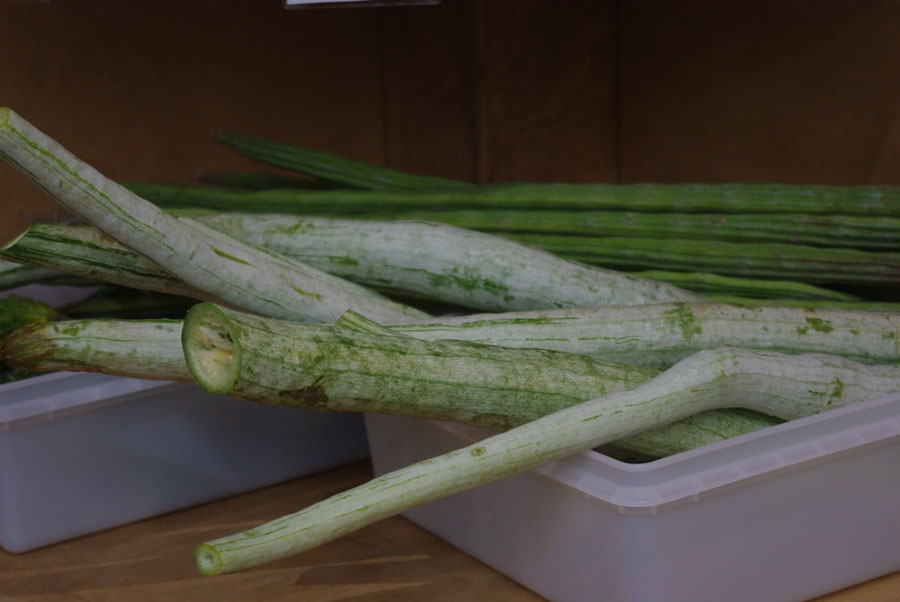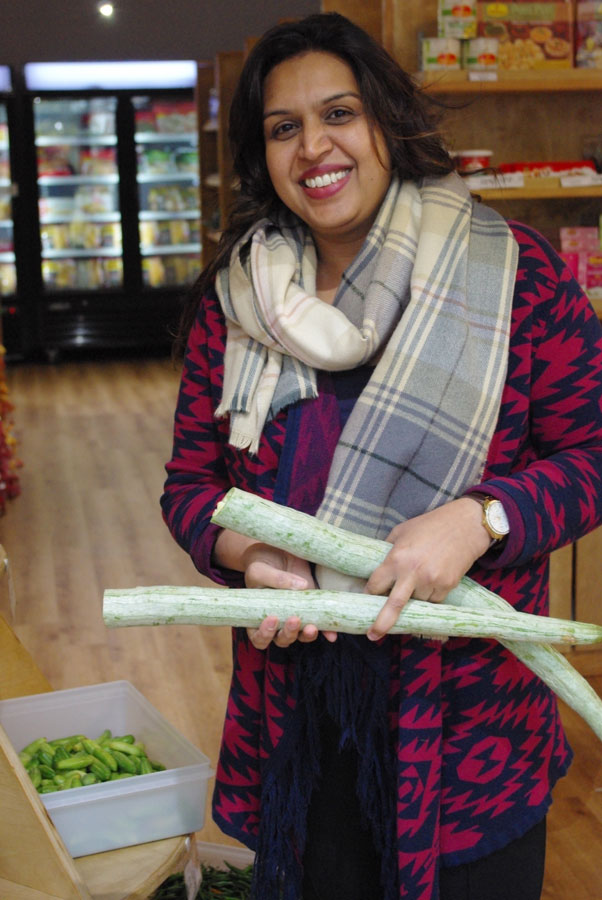What’s that food?
Looking for an authentic vegetable to put in your curries? The snake gourd is your choice.
Trichosanthes cucumerina is a tropical or subtropical vine, which is raised for its strikingly long fruit. Found in the wild across much of South and Southeast Asia, including India, Nepal, Indonesia, and southern China, it is also regarded as native in northern Australia. It has naturalized as well in Florida, parts of Africa, and on various islands in the Indian and Pacific Oceans.

Snake gourd//Photo credit: Cheryl Young/Salty
In Asia it is often eaten immature as a vegetable much like the summer squash, and in Africa, the reddish pulp of its mature fruit is used as an economical substitute of tomato. The soft-skinned fruit can reach up to 150 cm (59 in) in length. Its soft, bland flesh is similar to that of the luffa and the calabash. Some of the largest specimens can grow up to five feet in length, which is why this gourd is often used to make the traditional Australian musical instrument, the didgeridoo.
The taste is bitter, but this often disappears when cooking, although once the vegetable is ripe, the bitterness is more difficult to eliminate. The leaves, tendrils, and other leafy parts of the plant are often used as vegetable greens as well. In Indian cuisine, it is often peeled, chopped and then fried in a small amount of oil, with a dash of turmeric. Snake gourd is also a vegetable that is added to curry dishes.

Ramila Agrawal, owner of The Spice Store offers snake gourd for sale//Photo credit: Cheryl Young/Salty
Snake gourd contains a rich variety of nutrients, vitamins, and minerals that are essential for human health, including significant levels of dietary fiber, a small number of calories, and high levels of protein. In terms of vitamins, it possesses vitamin A, B, C, as well as manganese, magnesium, calcium, iron, potassium, and iodine.
Recently, Ramila Agrawal, owner of The Spice Store in Charlottetown began offering fresh Indian vegetables for sale, and you can pick up your snake gourd at the store just in time for Diwali. Diwali or Dipavali, is often called The Festival of Lights, and is a Hindu tradition that is believed to be a fusion of harvest festivals in ancient India. This year, Diwali falls during the first week of November.
- FOOD HISTORY CORNER - July 6, 2020
- NEWSLETTER SIGNUP - March 24, 2020
- WOMEN’S DAY 2020 - March 1, 2020
- FOOD HISTORY CORNER - March 1, 2020
- ICYMI - March 1, 2020
- UPDATE ON CHARLOTTETOWN FOOD COUNCIL - February 1, 2020
- ICYMI - February 1, 2020
- FOOD HISTORY CORNER - February 1, 2020
- ICYMI - January 1, 2020
- THE SALTY CHEF - December 2, 2019


